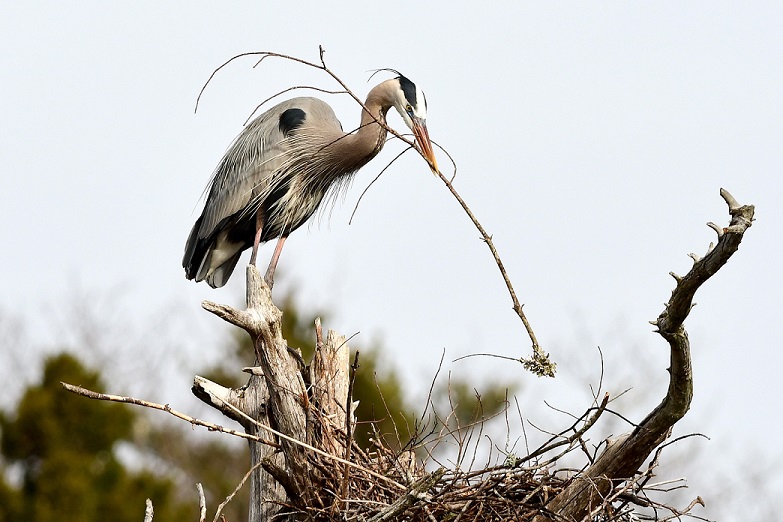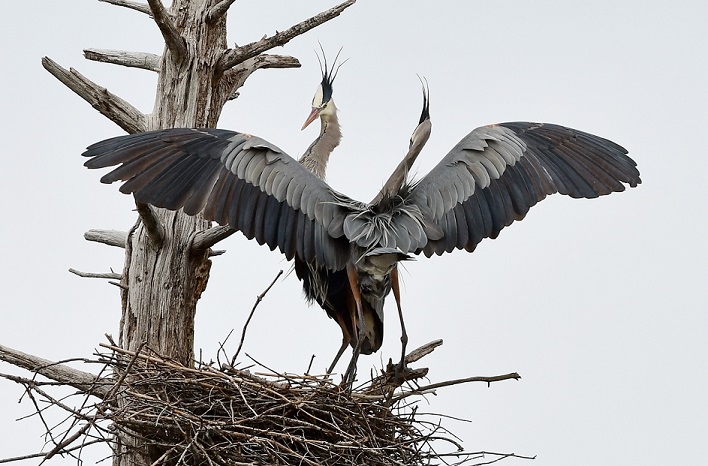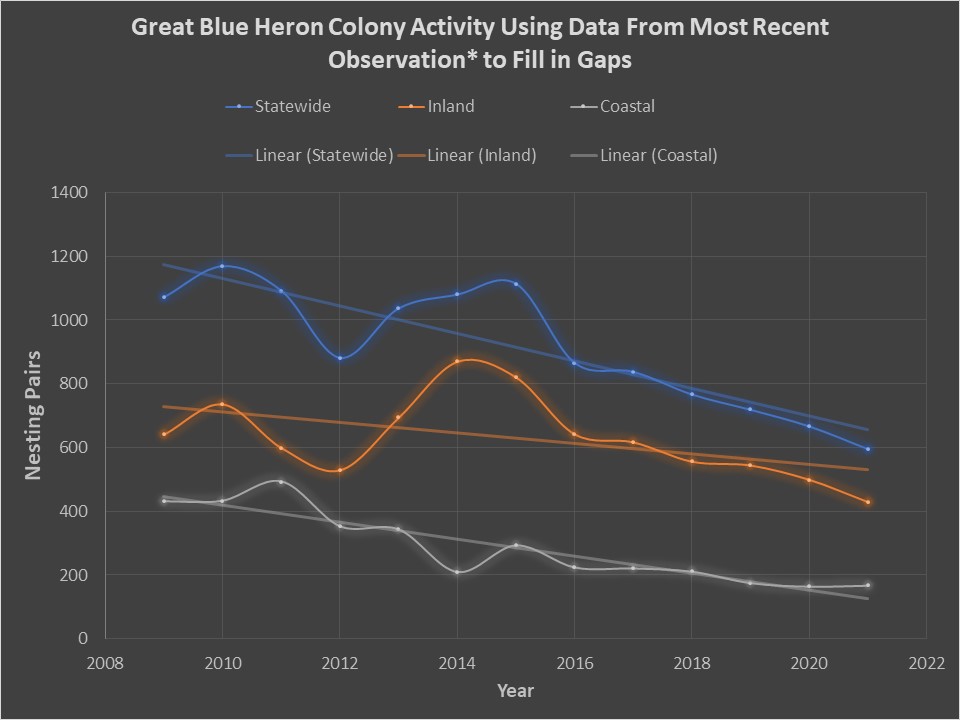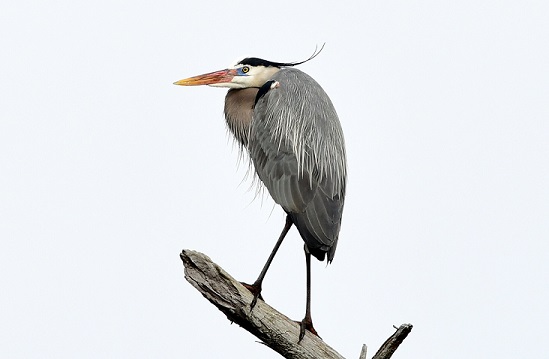April 6, 2022 at 1:58 pm

What’s your favorite harbinger of spring? Is it the hardy woodcock peenting in an open field, a red-winged blackbird flaunting its red epaulets from the tip of a cattail, or the first sound of spring peepers? These are all special occasions in my book, but I of course have another favorite: the return of our great blue herons to their nesting colonies! My inbox was recently graced by the beauty of Sherrie Tucker’s photos of a colony in Bristol. There, she photographed a dozen great blue herons, fixing up their nests and showing off their glorious colors. In early spring, they are dressed to impress each other, with fine decorative plumes on their head, chest, and back erected in communication only they understand, bright orange beaks, and blue lores (the area of unfeathered skin right in front of their eyes).

May 1st marks the official beginning of our 14th season of heron colony monitoring by Heron Observation Network volunteers! Although several colonies already have herons at their nests, particularly in southern and coastal Maine, I encourage all observers to give them space while they are courting and mating. Before we begin, here’s a summary of how the 2021 season went.
Thanks to seventy volunteers and four staff, we conducted at least 216 observations of 127 colonies. Volunteers contributed at least 268 hours of observation time and logged 4,720 miles travelling to and from colonies. Out of the 127 colonies, 52 were active with 398 nesting pairs. The other 75 showed no heron nesting activity. Some of these 75 are sites that have been inactive for a few years already. We continue checking them for five years before not including them as a priority for observation. Since we can’t make it to all colonies each year, I use the most recent data to fill in any unknowns, as reflected in the chart below.

We saw another drop in nesting pairs in 2021, despite finding five new colonies which added 36 active nesting pairs to our tally. Since we began the Heron Observation Network in 2009, inland nesting pairs have dropped by 33.0% and coastal nesting pairs have declined by 61.2%. The overall statewide drop in nesting pairs is 44.4%. We do not have a clear reason for the decline, but plan to continue monitoring colonies, tracking tagged herons, and repeating our aerial survey in 2023 to obtain a second population estimate. MDIFW continues to work with other agencies during development permit processes to avoid and minimize impacts to nesting herons. We also pay attention to sick, injured, and dead herons that are reported to be sure we are not missing an important disease or toxin that may be affecting them.
Looking back at the photos shared by Sherrie Tucker, I am reminded of the beauty, grace, and intricate habits of great blue herons, and can’t wait to get out to see them through my own binoculars. I wonder what new lessons they may hold for both you and me?
